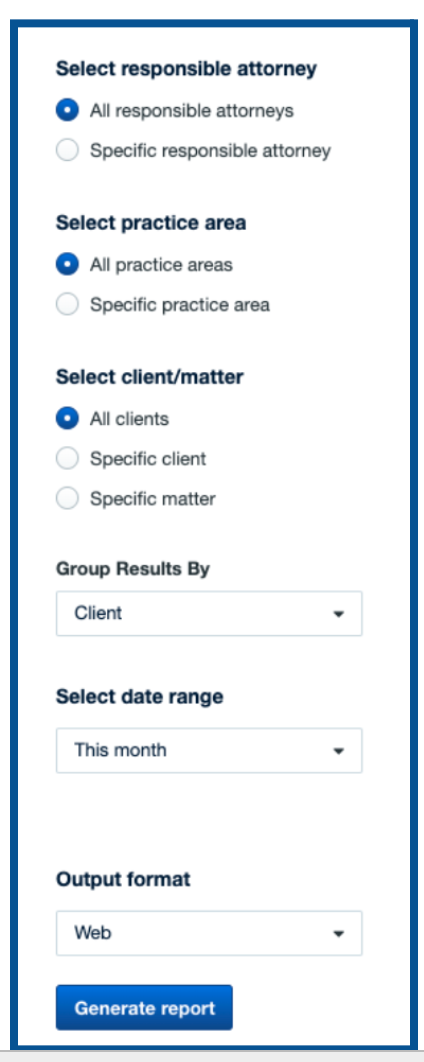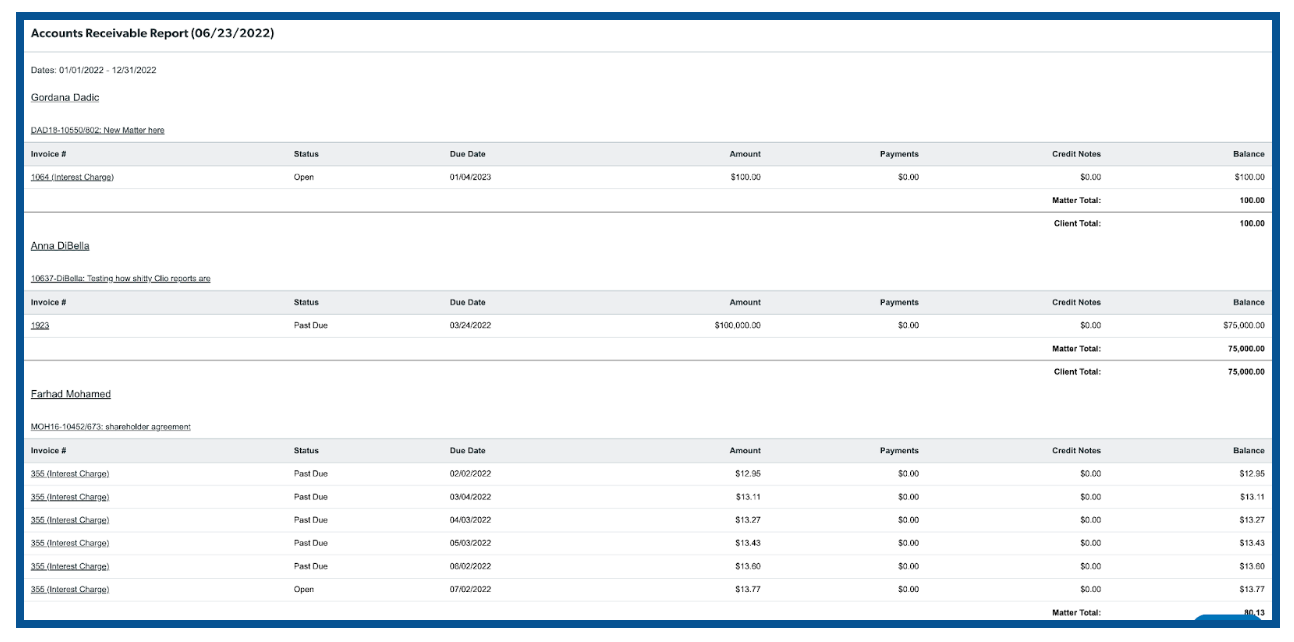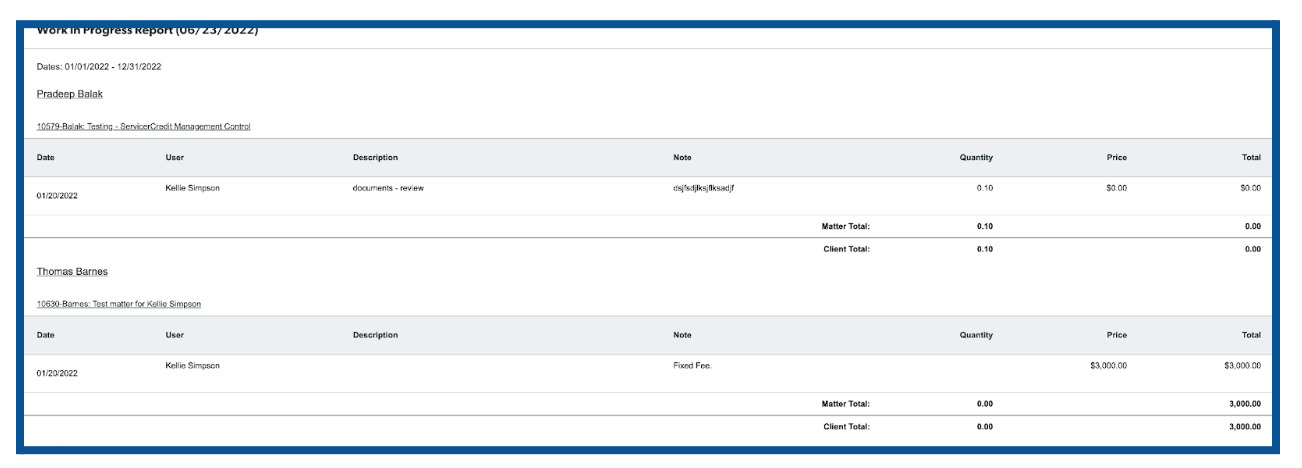Clio Reports
As I finalize my month on Clio, the legal tech software, the month has certainly flown by. I've received some great responses and questions on the topic. Since this is the #1 software for the legal industry, I am hoping I can convince my business partner, Sarah Prevost, who is a Clio expert, to perhaps do some guest posts in the future.
Finding Reports
Like other legal tech software, Clio has a multitude of reports. They fall into buckets like billing, accounts receivable, matter, and trust listing. See this Clio support page for an overview of the reports and where to look for them.
Rant
One of my issues with Clio is that sometimes when you look for a specific report in the help section, it will tell you that you need to do the following steps to create this in Excel. Although they take you through creating it step-by-step, this task may not be simple for some users. My question is, "why do we have to do all the work?" When I contacted support, they directed me all to this great outside software that will build these for you for an additional fee. If Clio has been around the longest, why aren't some of these reports INSIDE the software?
OK, rant over.
Report wish list
We would like to see the three-way bank reconciliation report. I know this has been an "ask" for multiple years, and it's been in the works. This report would be a game-changer for a three-way reconciliation report for Clio clients who connect QuickBooks to Clio.
Trust ledger
Clio's Trust Ledger Report is designed to give the law firm a detailed breakdown of client and matter transactions, including payments, disbursements, and transfers from one trust to another.
This report is categorized by client trust account, date, recipient, reference, matter, funds in and out, and balance. While you can select to view one trust or all and choose your date ranges (right down to custom), we recommend that you tick off the boxes to show zero balances and matter-to-matter transactions to get the complete picture in your report. We like to do the web view as the output format, but you can also do .csv if you are trying to troubleshoot the trust accounting.
Additionally, be sure to run this by the client or by matter. Mismatched balances can cause issues when reviewing the data in this report. Sometimes the attorney will bill their client from the wrong level.
Sample view of choices on reports

Accounts receivable (AR)
One of the most valuable reports in Clio is the accounts receivable reports. They show the amounts outstanding on all open and past due invoices on a per-user, per-client, and per-matter basis. The accounts receivable report details the amounts due on approved outstanding invoices, partial payments made towards those amounts, and credit notes applied to invoices. We want to be sure the values here align with the values in the AR reports in QuickBooks.
Accounts Receivable Report Example 
Work in process (WIP)
This report will give your firm a detailed view of unbilled time and expense activities for all matters, including activities not yet on any bills and activities on bills in draft and bills pending approval. Of course, this report is for work-in-process activities only. If the billed time has been put on a bill, even if the time or expense is unpaid or even approved bills and paid bills, these items do NOT show up in this report. It is only for activities or expenses not billed yet.
Work in process report example

That concludes the June series on Clio. We will for certain revisit Clio since we have had such a great response to the series. Next week we will come back to our typical legal topics.
If you have enjoyed this topic, let us know. If you are an attorney or someone who works at a law firm and are looking for bookkeeping help or need assistance in migrating off other software to Clio, reach out. These are services we provide.



